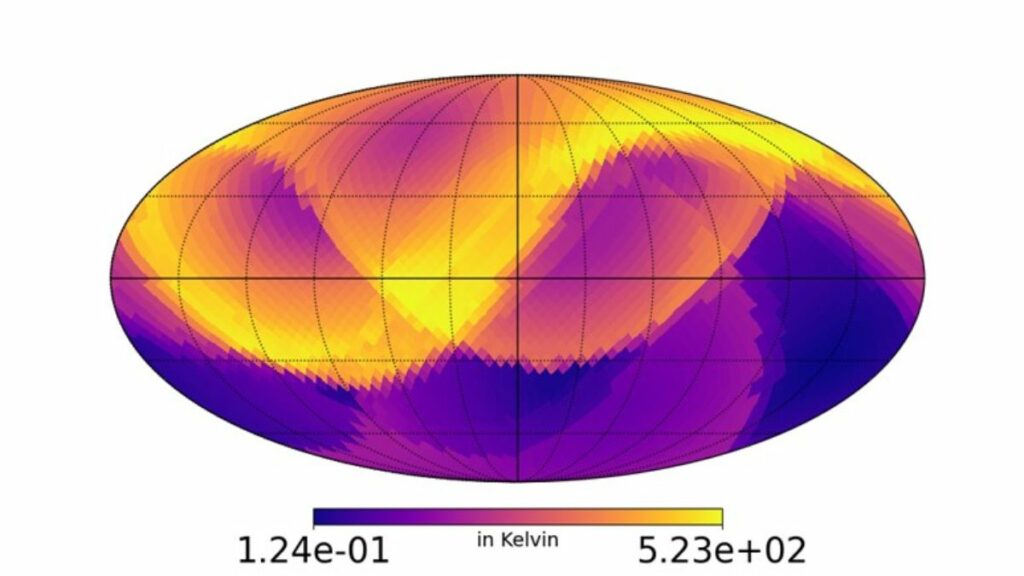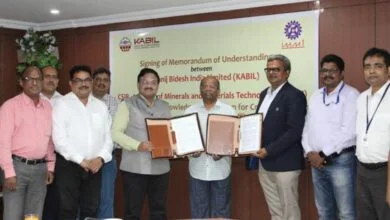New algorithm to quantify terrestrial RFI in space for Earth-orbiting radio astronomy experiments

A new algorithm developed by scientists that is capable of estimating and mapping the unwanted Radio Frequency Interference (RFI) signals in space, can help design instruments that are capable of offering optimal operations in the presence of RFI and thereby, enriches the data obtained from the future space-based Astronomy missions.
In order to study the early Universe and its evolution, astronomers tune their radio antennas within the 40 to 200 Mega Hertz (MHz) range in search of the 21-cm hydrogen line, believed to contain some of the unknown secrets about the cosmos. However, given their faint and weak strength, detecting these signals is extremely challenging. In addition, the fast-advancing technologies and expanding areas of human settlements have led to an increased number of sources emitting RFIs, many even constraining the efforts for recording astronomical observations on land.
Scientists at Raman Research Institute (RRI), an autonomous institute of the Department of Science and Technology, have developed an algorithm called STARFIRE which can estimate the RFI emitted by FM radio stations, WiFi networks, mobile towers, radar, satellites, and communication devices, and use this calculation for designing and fine-tuning the antennas and other instrument components of missions like India’s Probing ReionizATion of the Universe using Signal from Hydrogen (PRATUSH). PRATUSH is one of the several mission opportunities in space contemplated to address the growing RFI on land, to study the birth of the first stars and galaxies in the Universe using the 21-cm hydrogen line obtained from the far side of the moon.
The RFI emitted by Frequency Modulation (FM) stations is one of the major concerns for the frequency band of our scientific interest,” said Dr Mayuri Rao, faculty, RRI, and co-author of the latest study published in the journal Astronomy and Computing by Elsevier.
“A low-frequency cosmological experiment in Earth’s orbit requires a quantitative assessment of the RFI environment, as terrestrial interference remains an inevitable contaminant,” said Sonia Ghosh, a PhD student at Kapteyn Astronomical Institute, Netherlands, and the lead author of the paper titled ‘STARFIRE: An algorithm for estimating radio frequency interference in orbits around Earth’.
The RRI group used information on the FM transmitter stations from six countries in the world. Data from Canada (number of stations – 8,443), USA (28,072), Japan (Tokyo – 21), Australia (2,664), Germany (2,500), and South Africa (1,731) were used as inputs for developing the model and testing STARFIRE – Simulation of TerrestriAl Radio Frequency Interference in oRbits around Earth.
“Using this data, we have attempted to quantify the effect of RFI variation with frequency, altitude, and different locations over Earth,” added Dr Rao.

These RFI effects were studied at altitudes 400 km, 3,795 km, and 36,000 km from the Earth’s surface, which correspond to the Low Earth Orbit, Medium Earth Orbit, and Geo-stationary orbit, respectively.
“Our study has concluded that compared to high altitude orbits, lower altitude orbits see a smaller fraction of the Earth and hence RFI from fewer transmitters would be more suitable for the Phase-I of PRATUSH. The subsequent phase will be a lunar orbiter and will be informed by observations from Phase-I,” said Dr Saurabh Singh, another co-author and an RRI faculty in Astronomy and Astrophysics.
“This algorithm can also be handy in orbit selection for future missions,” said Ghosh.
Another advantage of STARFIRE would be the flexibility for users to change properties of the antennas that transmit and receive RFI along with including the astrophysical radio signals from our own galaxy and the cosmos to derive meaningful conclusions about experiment sensitivity.
“Given its generic mathematical formulation, the code can be used for a wide range of applications, wherein information of RFI for missions with low RFI orbits especially in the ~100 MHz frequency range, are planned,” noted Dr. Rao.
“We plan to add more stations and cover a wider geographical area on the Earth towards making the algorithm robust and easier to use,” said Ghosh.
While the researchers have readied the beta-version of the algorithm which can be shared upon request, they have sought for reliable information on FM radio stations across the globe, to be added to the existing dataset.
Published paper link: https://www.sciencedirect.com/science/article/pii/S2213133723000422?dgcid=author
Disclaimer: This is an official press release by Pib.








